Related Research Articles

The National Society Daughters of the American Revolution is a lineage-based membership service organization for women who are directly descended from a person involved in supporting the American Revolutionary War. A non-profit group, the organization promotes education and patriotism. Its membership is limited to direct lineal descendants of soldiers or others of the American Revolution era who aided the revolution and its subsequent war. Applicants must be at least 18 years of age and have a birth certificate indicating that their gender is female. DAR has over 190,000 current members in the United States and other countries. The organization's motto is "God, Home, and Country".
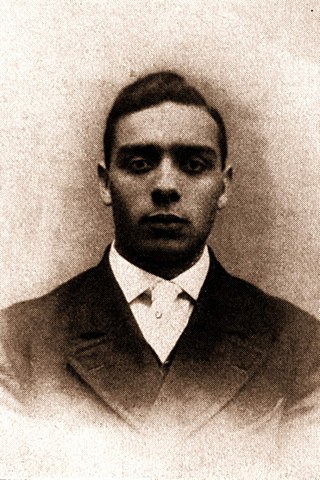
Edwin Bancroft Henderson, was an American educator and National Association for the Advancement of Colored People (NAACP) pioneer. The "Father of Black Basketball", introduced basketball to African Americans in Washington, D.C., in 1904, and was Washington's first male African American physical education teacher. From 1926 until his retirement in 1954, Henderson served as director of health and physical education for Washington, D.C.'s black schools. An athlete and team player rather than a star, Henderson both taught physical education to African Americans and organized athletic activities in Washington, D.C., and Fairfax County, Virginia, where his grandmother lived and where he returned with his wife in 1910 to raise their family. A prolific letter writer both to newspapers in the Washington, D.C., metropolitan area and Alabama, Henderson also helped organize the Fairfax County branch of the NAACP and twice served as President of the Virginia NAACP in the 1950s.

Normal School for Colored Girls established in Washington, D.C., in 1851 as an institution of learning and training for young African-American women, especially to train teachers.
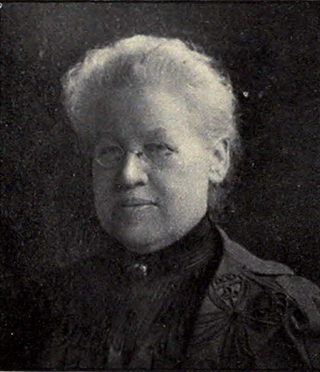
Eliza Maria Mosher was a United States physician, inventor, medical writer, and educator whose wide-ranging medical career included an educational focus on physical fitness and health maintenance. She was the first Dean of Women at the University of Michigan, and the first woman professor to be recognized by the university.

The Woman's Relief Corps (WRC) is a charitable organization in the United States, originally founded as the official women's auxiliary to the Grand Army of the Republic (GAR) in 1883. The organization was designed to assist the GAR and provide post-war relief to Union veterans. The GAR had been created as a "fraternal" organization and refused to allow women to join up until the creation of this auxiliary. It is largely dedicated to historical preservation of research and official documentation related to the WRC and GAR.
The Howard University College of Medicine (HUCM) is an academic division of Howard University that grants the Doctor of Medicine (M.D.), Ph.D., M.S., and the M.PH. HUCM is located at the Howard University Health Sciences Center in Washington, D.C., and it was founded in 1868 in response to the growing population of the city.

Nellie Louise Young was the first African American woman licensed to practice medicine in Maryland.
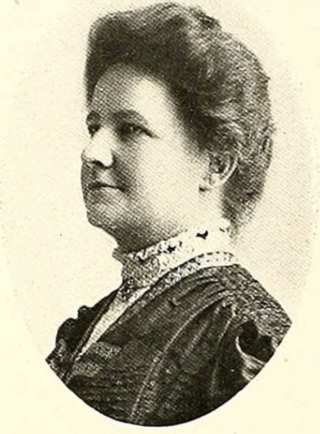
Carrie Thomas Alexander-Bahrenberg was a member of the University of Illinois board of trustees and a Republican civic and political activist.

Mary Barker Bates (1845–1924) was a 19th-century American physician and surgeon, practicing in Salt Lake City and Colorado. She was among the first women first admitted to the Denver Medical Society. She joined the staff of the Women's and Children's Hospital in 1885. She was also a vice president of the Colorado Medical Society. Bates served on the Denver School Board.

Sue A. Sanders was an American teacher, clubwoman, and author, who was prominent in social circles. She was a leader in charitable organizations serving as the ninth National President of the Woman's Relief Corps (WRC). Sanders was the originator of placing a flag in every school house, hers the first school to have a flag in McLean County, Illinois. Sanders was also the author of A journey to on and from the "golden shore" (1887).

Carrie Chase Davis was an American physician and suffragist. After teaching for some years, she graduated with a Medical Degree from Howard University College of Medicine in 1897, with a specialization in Bacteriology. She was one of the leading women practitioners of the Western Reserve and was also prominent as a woman suffragist of the west. Davis served as secretary of the Erie County Medical Society, and recording secretary of the Ohio Woman Suffrage Association.

E. Florence Barker was a leader and an activist in the American woman's club movement. She was a co-founder and charter member, of a charitable organization, serving as the first president of the National Woman's Relief Corps (WRC). Elected in July 1883, she understood the need to negotiate cooperation with the parent organization, the Grand Army of the Republic. Barker was an eloquent speaker, and wrote more than a thousand letters during her administration.
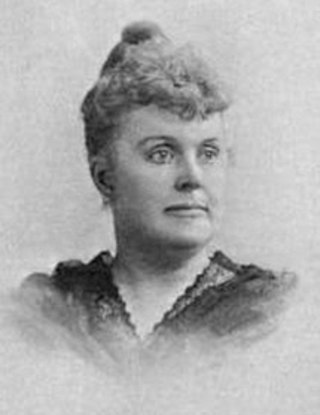
Mary Ella Noyes Farr was an American osteopathic physician, educator, clubwoman, and suffragist, based in Pierre, South Dakota.
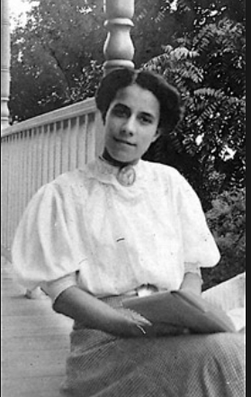
Mary Ellen Henderson was an African-American educator and civil rights activist in the mid-1900s. She is most famous for her work desegregating living spaces in Falls Church, working to build better facilities for black students in Falls Church, Virginia and starting the CCPL, the first rural branch of the NAACP.

Fanny E. Minot was an American public worker, social reformer, charitable organization leader, and clubwoman who was at the front in many lines of public service, including charitable, educational, church and social work. She held a strong interest in all those movements of the 20th-century which brought women into prominence. Minot served as president of the Woman's Relief Corps (WRC) of Concord, New Hampshire, of the State of New Hampshire, and lastly, as the 22nd National President of the WRC. She was also a member and regent of the Daughters of the American Revolution (DAR).

Margaret Ray Wickens was an American public affairs organizer, social reformer, and charitable organization leader who served as tenth National President of the Woman's Relief Corps (WRC). Eloquent, Wickins was called the "Golden-tongued orator of the Woman's Relief Corps". Her executive abilities during the years that she was actively engaged in WRC advanced the organization's patriotic work. As an orator, philanthropist and industrial worker, Wickens had no peer. She served as president of the Kansas State Assembly of Rebekahs, and was active in the temperance movement, filling the role of district president of her Woman's Christian Temperance Union (WCTU) for several years. She was a teacher, a member of the Daughters of the American Revolution (DAR), and a prominent Good Templar. In her later life, she held a number of state positions in Illinois.
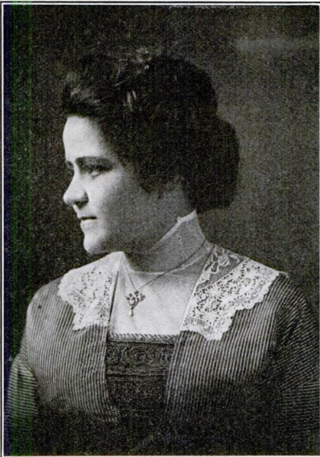
Marie Bernadette Lucas was an African American physician, one of the earliest women to practice medicine in Washington, D.C.
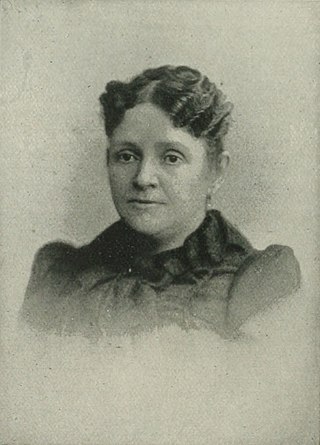
Mandana Coleman Thorp was an American Civil War nurse and singer. She rallied the Union Army troops by singing battle hymns and national airs, and tended to the sick and injured. In 1865, at the Grand Review of the Armies in Washington, D.C., she rode at the head of the 1st New York Dragoons Regiment. After the war, she moved west with her husband, Colonel Thomas J. Thorp, and worked as a public official in Northern Michigan. Around 1900, they settled in Oregon, where she was active in the Woman's Relief Corps.
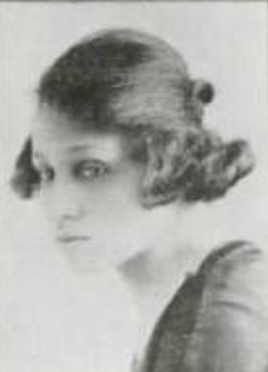
Lillian R. Skinker Malone was an American educator based in Washington, D.C.
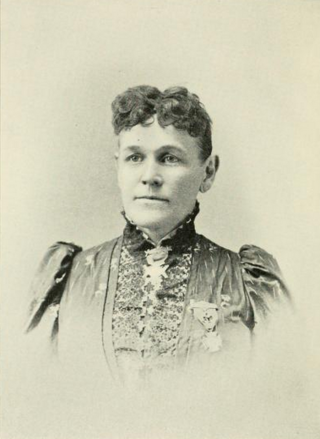
Sarah E. Fuller (1838–1913) was an American philanthropist and social leader. For many years, she was affiliated with the Woman's Relief Corps (WRC). She served as the first President of its Massachusetts Department (1879–1882), and third President of the National organization. Fuller had a record of 40 years' service for the soldiers of the Union Army, having enrolled herself as a worker in the United States Christian Commission during the early days of the Civil War.
References
- ↑ "Commencement Exercises of the Miner Normal School." The Washington Post. Washington D.C. 11 June 1886: 2. Proquest Databases.
- ↑ "1889-90: Catalog of the Officers and Students of Howard University". Howard University Catalogs. 1889-01-01.
- ↑ Coursey, Leon N. (1971). The life of Edwin Bancroft Henderson and his professional contributions to physical education / (Thesis). The Ohio State University.
- ↑ Mitchell, Michele (2005-10-12). Righteous Propagation: African Americans and the Politics of Racial Destiny after Reconstruction. Univ of North Carolina Press. ISBN 978-0-8078-7594-0.
- ↑ Education, District of Columbia Board of (1892). Report.
- ↑ Coursey, L. (1971) The Life of Edwin Bancroft Henderson and His Professional Contributions to Physical Education." Pg. 99. Ohio State University. Anne Arbor, Michigan. Via OhioLink https://etd.ohiolink.edu/apexprod/rws_olink/r/1501/10?p10_etd_subid=128789&clear=10
- ↑ "1896: Alumni Catalogue of Howard University with List of Incorporators, Trustees, and Other Employees". Howard University Catalogs. 1896-01-01.
- ↑ "May Unite Their Forces." The Washington Post. Washington, D.C. 20 July 1896: 10. Proquest databases.
- ↑ "Women's Relief Corps." Washington, District of Columbia. June 15, 1905. Pg. 14. Roll of Members, Address of National President and Report of Officers of the ... National Convention of the Woman's Relief Corps, Auxiliary to the Grand Army of the Republic. (1911). United States: Griffith-Stillings Press. https://books.google.com/books?id=vWgTAQAAMAAJ
- ↑ Journal of the National Convention of the Woman's Relief Corps. (1915). United States: Griffith Stillings. https://books.google.com/books?id=j2oTAQAAMAAJ
- ↑ "Births, Deaths, and Marriages." The Washington Post. Washington D.C. 17 Sep 1930: 22. Proquest databases.
- ↑ Stolp-Smith, Michael (2018-03-25). "Freedmen's Hospital/Howard University Hospital (1862-- ) •" . Retrieved 2021-05-15.